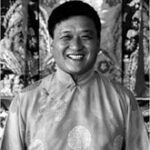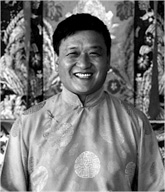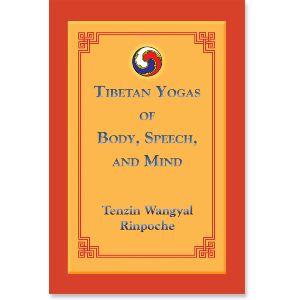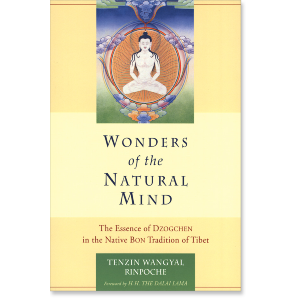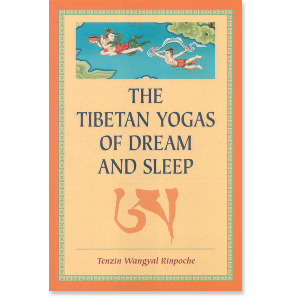| The following article is from the Winter, 2012 issue of the Snow Lion Newsletter and is for historical reference only. You can see this in context of the original newsletter here. |
By
TENZIN WANGYAL RINPOCHE
The warrior syllables are pure and indestructible. the first sounds that arose from the essence were the five warrior seed syllables "pawo dru nga."
Before the development of human language, there were only the sounds of nature: waterfalls, wind, rain. Sound had no conceptual associations. When we trace sound farther back to its very beginnings, we arrive at the pure, primordial sounds of the seed syllables.
According to the ancient Bon Buddhist tradition, the first sounds that arose from the essence were the five warrior seed syllables, the
pawo dru nga
(pawo, "warrior"; dru, "seed"; nga, "five").
They are called warriors because they have the ability to conquer our demons. The demons they fight are not necessarily evil beings; rather, they are the familiar demons of our emotions from which the experience of evil may arise.
for every demon, there is a warrior syllable that can overcome it.
There are four other classes of demons mentioned in the teachings, some related to karmic forces, others to the subtlest attachment of our own grasping mind. Whether we are troubled by distracting thoughts, having problems with anger, feeling too much desire or attachment, or suffering from karma-related chronic illness, whatever obstacle or obscuration we have is related to one of these demons.
And for every demon, there is a warrior syllable that can overcome it.
When we trace sound farther back to its very beginnings, we arrive at the pure, primordial sounds of the seed syllables.
The warrior syllables are pure and indestructible. They are able to penetrate through fear and cannot be destroyed by it. They cut through ignorance and open space; they are the doorway to connecting back to the original essence and to the wisdom qualities that arise from the essence.
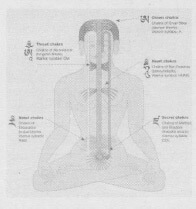
The five warrior syllables are the seed syllables of the five wisdoms.
Only wisdom can ultimately destroy the deluded ego that is the source of all our demons.
Enlightenment = Empathy + Wisdom(!)
According to Tibetan Bon Buddhism, the profound empathy of compassion is not enough to bring us to enlightenment; there must also be wisdom. Only wisdom can ultimately destroy the deluded ego that is the source of all our demons.
The Internal Warrior Syllables
For several years now I have been teaching a practice of the five internal warrior seed syllables,
A, OM, HUNG, RAM, 'and DZA,
based on a text from an oral transmission of the fourteenth century called The Peaceful Luminous A. These five are the focus of this chapter and the guided practice with the five warrior sounds in the next chapter. However, there are two other sets of five warrior seed syllables.
The biography of Tonpa Shenrab says:
From the mandala of the hearts
of the five deities radiate the
lights of the five wisdoms,
KAM, YAM, RAM, SUM,
and
OM; A, OM, HUNG, RAM,
and
DZA; SO, UM, HUNG, HE, and BHYO;
[which are] the external, internal, and secret warrior [seed syllables].
All three sets of warrior syllables—external, internal, and secret—comprise important original mantras.
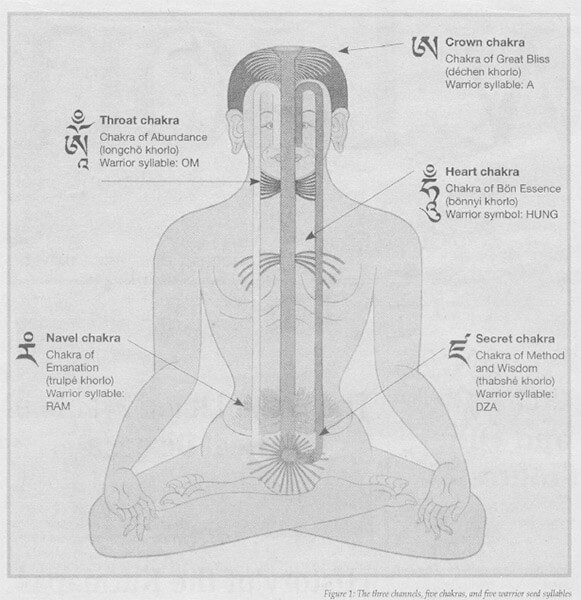
Authentication of Sacred Images
All three sets of warrior syllables—external, internal, and secret—comprise important original mantras.
The internal warrior syllables are already familiar to many practitioners of the Tibetan spiritual traditions. For example, in guru yoga practice,
A, OM,and HUNG



are visualized or sounded to help empower the practitioner with enlightened body, speech, and mind.
Tibetan lamas inscribe these same three syllables on sacred images and reliquaries such as paintings, photographs, and large stupas to empower and authenticate them. Without that authentication, a photographic print is no more than paper, and a thangka wall hanging is just cloth.
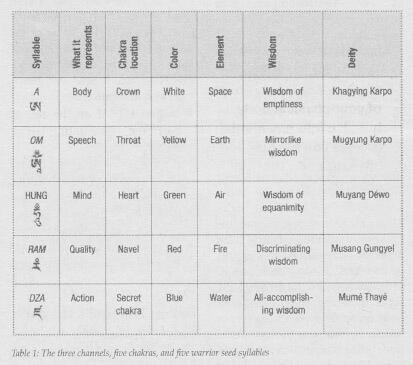
The Bon Buddhist Tradition
In the Bon Buddhist tradition, inscribing A on an image in red ink activates the body and creates space within the image.
Inscribing OM activates speech and all the enlightened qualities, such as love and compassion.
Inscribing HUNGactivates the heart/mind and the ability to radiate and manifest those qualities.
Once fully empowered, the image is said to embody the actual body, speech, and mind of the deity.
The Fourth and Fifth Warrior Syllables
The fourth and fifth warrior syllables are RAM, the seed syllable of the fire element, and DZA, the seed syllable of action. These two have a particularly powerful, active quality and are sometimes included with A, OM and HUNG when authenticating certain images.
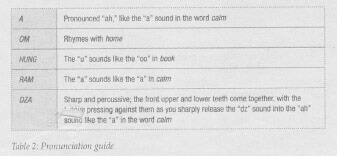
In meditation practice, voicing these five syllables in progression enables us to connect through the sound in a pure, direct way with higher states of being. Sounding them helps us to connect with the clear, open, primordially pure space that is the base of all, and then in turn to experience, and ultimately manifest, the enlightened qualities we most need.
Through the five warrior syllables, we are able to affect profound shifts in our experience and awareness, with life-changing implications. These syllables are almost unbelievably powerful. In fact, many people don't believe in their power. Reciting them seems too easy—and if a practice is easy, it may seem less interesting.

